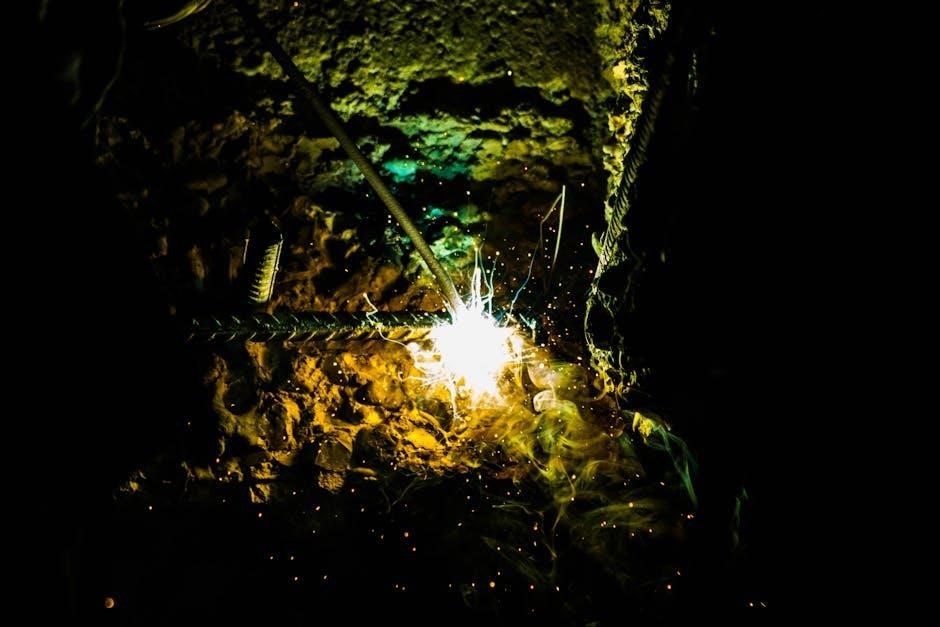Welcome to the Dura Heat Kerosene Heater Manual. This guide provides essential instructions for safe and efficient operation, including assembly, maintenance, and storage. Read carefully before use to ensure optimal performance and safety.
Overview of the Manual’s Purpose and Importance
This manual serves as a comprehensive guide for the safe and efficient operation of your Dura Heat kerosene heater. Its purpose is to provide clear instructions for assembly, maintenance, and troubleshooting, ensuring optimal performance and longevity. The manual emphasizes safety precautions, proper fuel usage, and essential maintenance procedures to prevent hazards. By following the guidelines, users can operate the heater confidently, avoiding potential risks associated with improper use. The manual also outlines steps for seasonal storage and preparation, ensuring the heater remains functional for years. It is a vital resource for both new and experienced users, offering detailed insights to maximize efficiency while minimizing risks. Always refer to this manual before performing any operation to ensure compliance with safety standards and manufacturer recommendations.
Key Features of the Dura Heat Kerosene Heater
The Dura Heat kerosene heater is designed for reliable and efficient heating, offering several key features that enhance performance and safety. It operates exclusively with 1-K kerosene, ensuring clean and efficient combustion. The heater includes a manual siphon pump for safe and easy fueling, which must be done outdoors to prevent fume accumulation. Its portable design allows for versatile use in various settings, while the durable construction ensures longevity. The heater also features a wick system that requires regular maintenance to maintain optimal performance. Additional safety mechanisms, such as automatic shut-off and protective grills, are included to prevent accidents. These features collectively make the Dura Heat kerosene heater a practical and safe choice for supplemental heating needs, provided all guidelines in the manual are strictly followed. Proper care and adherence to instructions are essential to uphold these safety standards.
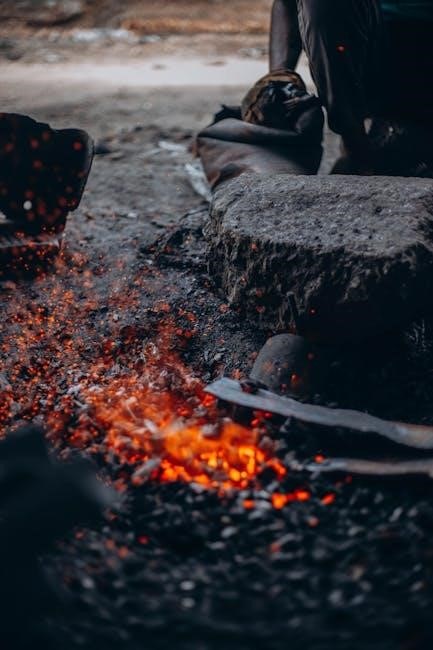
Safety Precautions and Warnings
Always prioritize safety when using the Dura Heat kerosene heater. Ensure proper ventilation and never fuel indoors to avoid hazardous fumes. Follow all manual instructions to prevent accidents and maintain safe operation at all times.
General Safety Guidelines for Operating the Heater
Always follow the manual’s instructions to ensure safe and efficient operation of your Dura Heat kerosene heater. Proper ventilation is essential to prevent carbon monoxide buildup. Never place the heater near flammable materials, such as curtains or furniture. Keep the heater away from drafty areas to maintain consistent performance. Ensure the heater is placed on a stable, level surface to avoid tipping. Avoid operating the heater near open flames or sparks, as this could ignite vapors. Never leave children or pets unattended near the heater. Always turn off the heater when leaving the room or going to sleep. Store fuel properly, and never leave kerosene in the tank for extended periods. Regularly inspect the heater for damage or wear and tear. By adhering to these guidelines, you can enjoy safe and reliable heat during the cold months.
Prohibited Fuels and Potential Hazards
The Dura Heat kerosene heater is designed to operate exclusively with 1-K kerosene or No. 1 fuel oil. Using any other fuel, such as gasoline, diesel, or benzene, is strictly prohibited and can lead to serious hazards, including explosions or the release of toxic fumes. Never substitute 1-K kerosene with other fuels, as this can cause permanent damage to the heater or pose significant safety risks. Additionally, old or degraded fuel should not be used, as it can clog the wick or produce harmful emissions. It is crucial to follow the fuel specifications outlined in this manual to ensure safe and efficient operation. Always store kerosene in approved containers and dispose of it properly. Misusing fuel can void the warranty and create dangerous operating conditions.
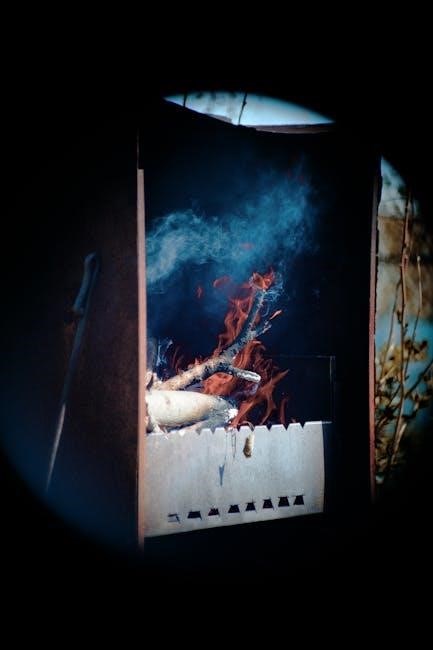
Understanding Your Dura Heat Kerosene Heater
This section helps you familiarize yourself with the heater’s components and essential fuel requirements. The Dura Heat kerosene heater is designed for efficient heating using 1-K kerosene only.
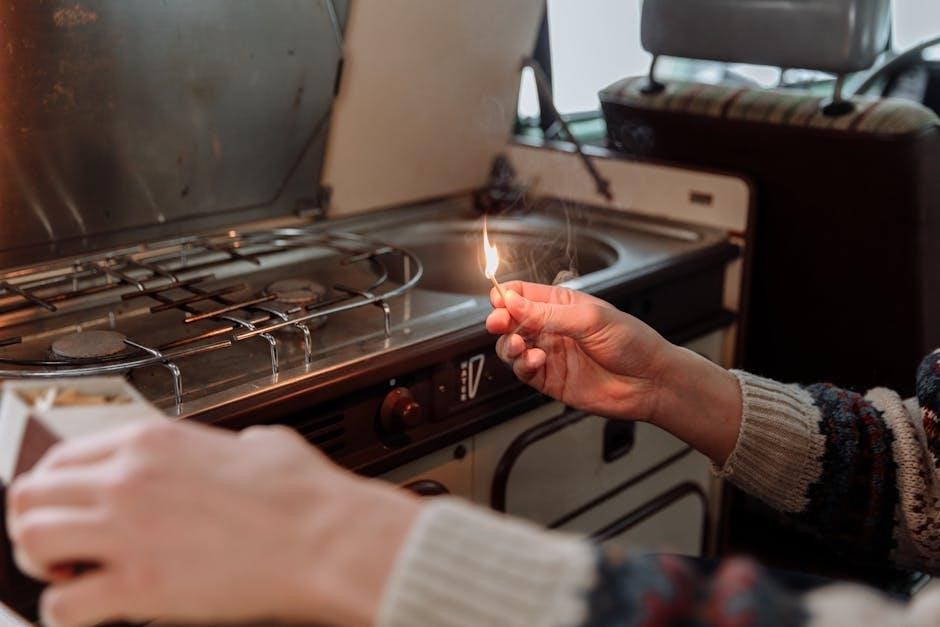
Identifying Heater Components and Accessories
Understanding your Dura Heat kerosene heater begins with identifying its key components and accessories. The heater includes a burn chamber, fuel tank, wick, and ignition system. The burn chamber houses the flame, while the fuel tank holds 1-K kerosene. The wick draws fuel to the burn chamber for combustion. Accessories like the manual siphon pump simplify fueling, and a storage cap protects the tank when not in use. Additional components may include a tip-over switch for safety and a ventilation system for proper airflow. Familiarizing yourself with these parts ensures safe operation and maintenance. Always refer to the manual for specific details on your model, as components may vary slightly. Proper identification helps prevent misuse and ensures efficient heating performance.
Understanding the Fuel Requirements (1-K Kerosene)
The Dura Heat kerosene heater is specifically designed to operate with 1-K kerosene, the purest and most refined form of kerosene fuel. Using 1-K kerosene ensures optimal performance, minimizes odors, and reduces the risk of carbon buildup. Never use gasoline, diesel, or other fuels, as they can damage the heater or create safety hazards. If 1-K kerosene is unavailable, No. 1 fuel oil is an acceptable substitute. Always store kerosene in a well-ventilated area, away from living spaces, and avoid keeping it for extended periods, especially over summer months, as it can degrade and harm the heater. Proper fuel selection is critical for safety, efficiency, and longevity of your Dura Heat kerosene heater. Refer to the manual for additional fuel-related guidelines and precautions.

Assembly and Initial Setup
Unpack and inspect the heater for any damage. Follow the manual’s step-by-step assembly instructions carefully to ensure proper setup and functionality. Refer to the guide for detailed directions.
Unpacking and Inspecting the Heater
Carefully unpack the Dura Heat kerosene heater and ensure all components are included. Inspect for any damage or defects. Locate the manual, siphon pump, and fuel tank. Before assembly, verify that all parts are intact and undamaged. If any components are missing or damaged, contact customer support immediately. Familiarize yourself with the heater’s design and components to ensure proper setup. Always follow the manual’s guidelines for safe and correct assembly. Read the safety precautions thoroughly to avoid potential hazards. Make sure the area is clear and well-ventilated before proceeding. Proper inspection ensures the heater functions efficiently and safely. If unsure about any step, refer back to the manual or seek professional assistance. This step is crucial for optimal performance and user safety.
Step-by-Step Assembly Instructions
Begin by carefully unpacking and inspecting all components. Attach the fuel tank to the heater base, ensuring a secure connection. Next, install the wick according to the manual’s specifications, making sure it is properly seated and aligned. Connect the burner assembly to the heater, following the diagram provided. Tighten all connections firmly but avoid over-tightening, which may damage threads. Ensure the siphon pump is correctly attached to the fuel tank. After assembly, double-check that all parts are securely fitted and no leaks are present. Refer to the manual for specific torque requirements for bolts and connections. Finally, perform a visual inspection to confirm everything is properly assembled. If unsure about any step, consult the manual or contact customer support. Proper assembly ensures safe and efficient operation of the heater. Always follow the instructions carefully to avoid potential hazards.
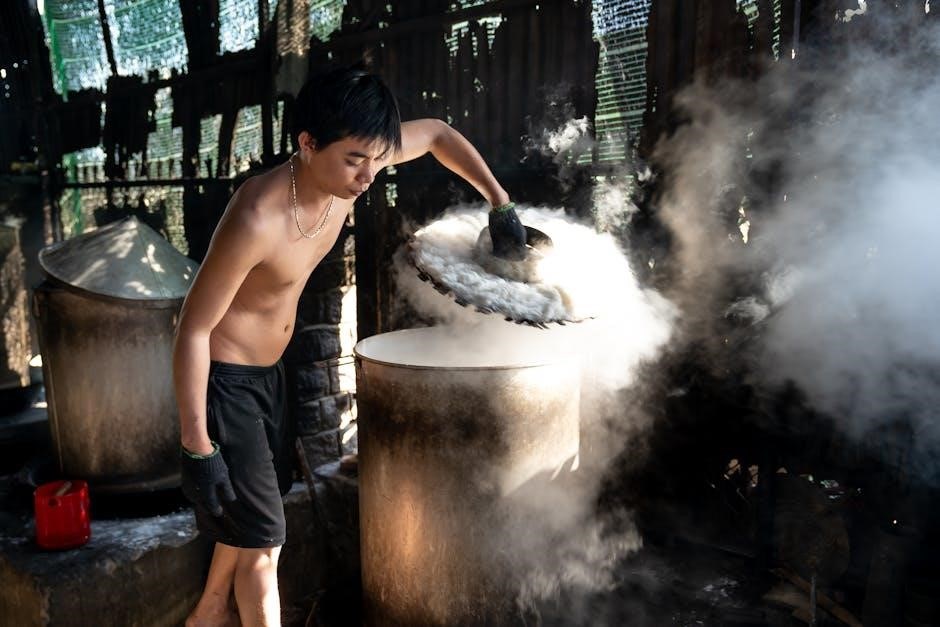
Fueling and Operating the Heater
Always use 1-K kerosene for optimal performance. Fill the tank outdoors using the manual siphon pump, ensuring the area is well-ventilated. Follow ignition procedures carefully for safe operation.
How to Properly Fill the Fuel Tank Outdoors
Always fill the fuel tank outdoors in a well-ventilated area to avoid the risk of fumes accumulating indoors. Use only 1-K kerosene or No. 1 fuel oil, as specified in the manual. Before filling, ensure the heater is on a level surface and the tank is empty of any residual fuel. Attach the manual siphon pump to the fuel tank, tightening the cap securely to create a proper seal. Insert the straight tube of the pump into the kerosene container and the flexible tube into the fuel tank opening. Pump slowly and steadily to avoid spills. Stop filling when the tank is approximately 2/3 full to allow for expansion. Inspect for leaks and ensure the fuel cap is tightly secured before moving the heater. Never fill the tank indoors or near an open flame.
Using the Manual Siphon Pump for Fueling
The manual siphon pump is designed to safely transfer kerosene to the heater’s fuel tank. Before use, ensure the pump is securely attached to the tank opening. Tighten the cap on the pump’s top to create a proper seal. Insert the straight tube into the kerosene container and the flexible tube into the fuel tank opening. Pump slowly and steadily to avoid spills. Stop when the tank is approximately 2/3 full to prevent overfilling. Never use the pump indoors or near open flames. After fueling, ensure the fuel cap is securely tightened to prevent leaks. Always use 1-K kerosene or No. 1 fuel oil, as specified in the manual. Avoid storing kerosene over summer months, as old fuel can damage the heater.
Ignition and Operating Procedures
To ignite your Dura Heat Kerosene Heater, ensure the wick is properly adjusted and the heater is placed on a level, stable surface outdoors. Light the wick using the igniter plug or a match, following the instructions in the manual. Allow the wick to burn steadily before increasing the heat output. Always use 1-K kerosene or No. 1 fuel oil, as specified. Monitor the heater during operation to ensure safe and efficient burning. Keep the heater away from flammable materials and out of reach of children. After use, turn off the heater and allow it to cool completely before storing. Regularly inspect the wick and replace it as needed to maintain performance. Follow all safety guidelines outlined in the manual to prevent accidents and ensure optimal heater function.
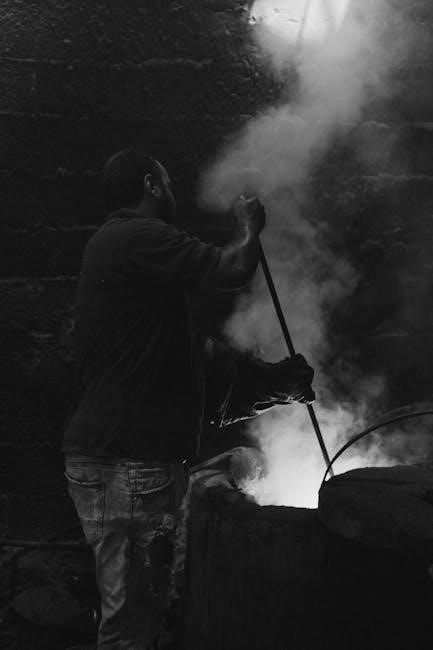
Maintenance and Care
Regularly clean the heater to remove carbon buildup and ensure efficient operation. Replace the wick annually or as needed. Store the heater dry and empty during off-season.
Cleaning the Heater and Removing Carbon Buildup
Regular cleaning is essential for maintaining your Dura Heat Kerosene Heater’s performance and safety. Turn off and let the heater cool completely before cleaning. Use a soft brush or vacuum to remove dust and debris from the exterior and vents. For carbon buildup, gently scrape surfaces with a stiff brush or metal tool, ensuring not to damage components. Dampen a cloth with water to wipe away loosened residue, but avoid harsh chemicals or abrasive cleaners. Always use a well-ventilated area for cleaning. After cleaning, ensure all parts are dry before reassembling. Regular maintenance prevents fuel inefficiency and potential hazards. For stubborn buildup, refer to the manual for specific instructions. Cleaning after each heating season is recommended to prepare the heater for storage.
Wick Maintenance and Replacement
Proper wick maintenance is crucial for the efficiency and safety of your Dura Heat Kerosene Heater. Regularly inspect the wick for signs of wear, such as fraying or discoloration. Replace the wick immediately if damaged, as it can affect combustion and performance. To replace the wick, turn off the heater, allow it to cool, and follow the instructions in the manual. Always use a genuine Dura Heat replacement wick to ensure compatibility and safety. After replacing, allow the wick to dry completely before reigniting the heater. For seasonal storage, dry the wick thoroughly and store it in a clean, dry place. Proper wick care extends the life of your heater and ensures reliable operation during the heating season.
Storage Procedures for Off-Season
Proper storage of your Dura Heat Kerosene Heater is essential to maintain its efficiency and longevity. Before storing, drain all fuel from the tank and wipe down the heater to remove any dirt or carbon buildup. Allow the wick to dry completely to prevent mold or mildew. Store the heater in a cool, dry, and well-ventilated area, away from flammable materials. Never store kerosene for extended periods, as it can degrade and damage the heater. For seasonal storage, consider using a replacement wick to ensure optimal performance when you resume use. Always follow the manufacturer’s guidelines for storage to ensure safety and functionality. Proper storage practices will help your Dura Heat Kerosene Heater remain reliable for years to come.
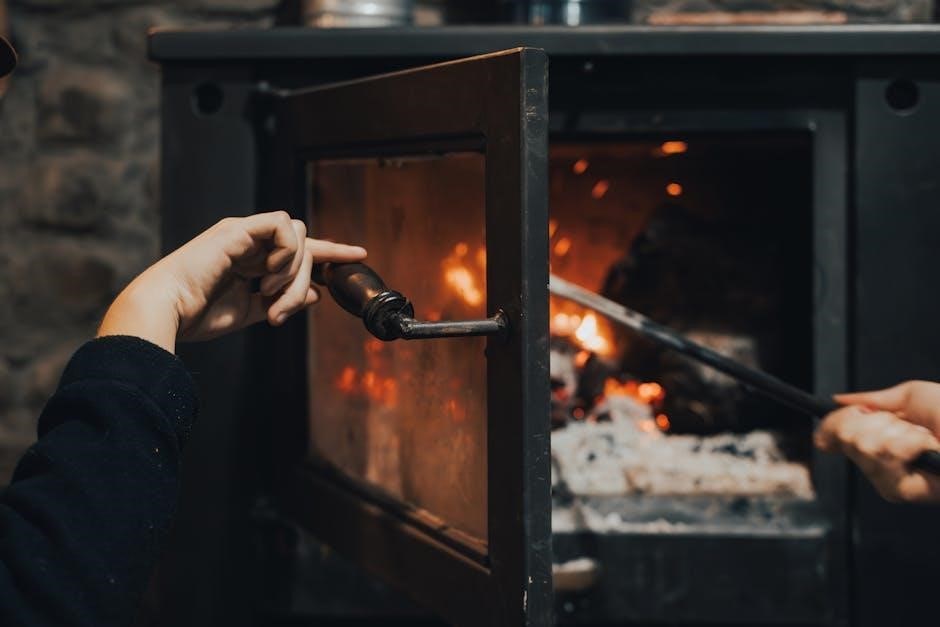
Troubleshooting Common Issues
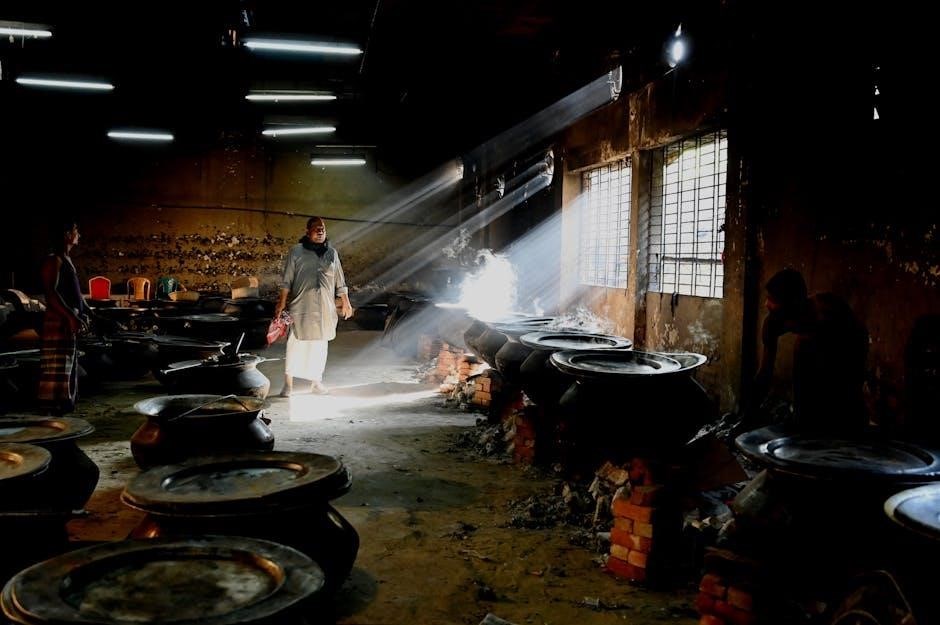
This section helps diagnose and resolve issues with your Dura Heat Kerosene Heater. From fuel-related problems to ignition and performance issues, find solutions to keep your heater running efficiently.
Diagnosing and Resolving Fuel-Related Problems
Fuel-related issues are common with kerosene heaters. Start by checking the fuel quality and ensuring it’s 1-K kerosene, as other fuels can cause malfunctions. If the heater won’t ignite, verify the fuel level and check for blockages in the fuel line or wick. Old or contaminated fuel can clog the system, requiring you to drain and clean the tank. Never use gasoline or other substitute fuels, as they can damage the heater. If fuel leaks are detected, tighten all connections and inspect for worn-out seals. Always fill the tank outdoors to prevent fumes from accumulating indoors. For persistent issues, refer to the manual or contact customer support for professional assistance. Proper fuel management is essential for safe and efficient operation.
Addressing Ignition and Performance Issues
If the heater fails to ignite or performs poorly, check the igniter first. Ensure the spark is functioning or that the electronic ignition is working. If the flame is weak or uneven, inspect the wick for proper height and cleanliness. A soiled or incorrectly sized wick can disrupt combustion. Verify that the air vents are unobstructed to ensure proper airflow. If the heater produces soot or emits a strong odor, it may indicate incomplete combustion, often due to incorrect fuel or a clogged burner. Clean the burner and wick regularly to maintain efficiency. Always turn off the heater and allow it to cool before troubleshooting; If issues persist, consult the manual or contact a professional. Proper maintenance and adherence to guidelines are crucial for reliable performance and safety.
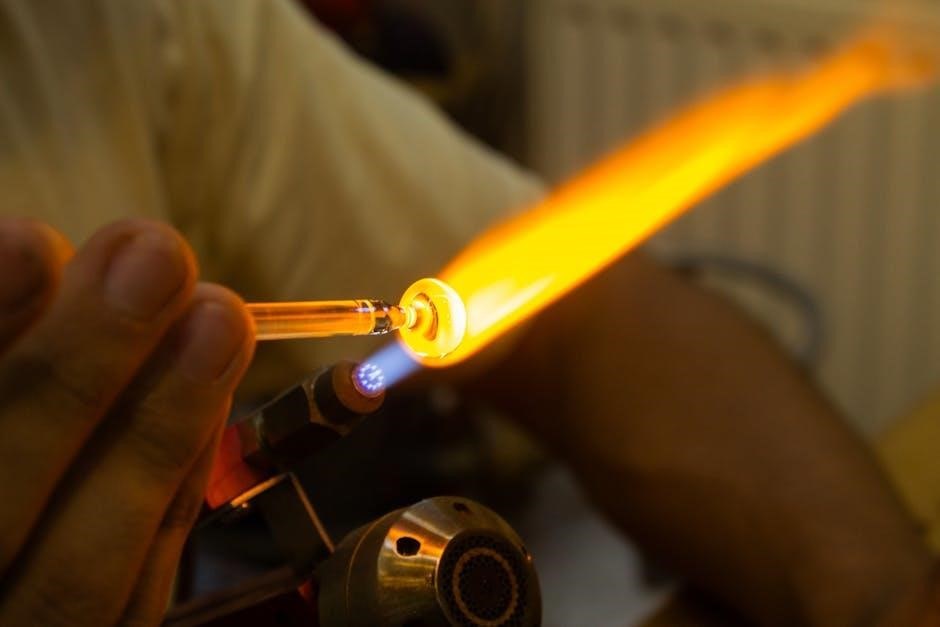
Winterizing Your Dura Heat Kerosene Heater
At the end of the heating season, dry the wick and remove all fuel from the heater. Properly store the heater to prevent damage during off-season.
Drying the Wick and Fuel Tank
Drying the wick and fuel tank is crucial for proper winterization of your Dura Heat kerosene heater. Start by turning off the heater and allowing it to cool completely. Once cool, drain the fuel tank using the manual siphon pump provided. Remove the wick and let it air dry, ensuring no moisture remains. For the fuel tank, use a clean, dry cloth to wipe away any residual fuel or condensation. Properly drying these components prevents rust, corrosion, and damage from old fuel. Store the wick and tank in a dry, well-ventilated area to maintain their condition for future use. Always follow the manufacturer’s guidelines for winterizing to ensure your heater remains in optimal working order.
Preparing the Heater for Seasonal Storage
Properly preparing your Dura Heat kerosene heater for seasonal storage ensures it remains in excellent condition for future use. After drying the wick and fuel tank, clean the heater thoroughly to remove any dirt, soot, or debris. Use a soft brush or cloth to wipe down the exterior and internal components. Apply a light layer of rust-inhibiting oil to metal parts to prevent corrosion. Store the wick in a dry, protected area, such as a plastic bag, to keep it clean and moisture-free. Place the heater in a well-ventilated, dry location, away from flammable materials. Cover the heater with a protective cover to shield it from dust and pests. Avoid storing fuel with the heater, as old fuel can degrade and cause damage. Always refer to the manual for specific storage recommendations to ensure your heater is ready for the next heating season.
Congratulations! You’ve successfully navigated the Dura Heat Kerosene Heater Manual. Always follow safety guidelines, store the heater properly, and refer to this manual for future reference. Happy heating!
Importance of Following Manual Instructions
Following the instructions in the Dura Heat Kerosene Heater Manual is crucial for ensuring safe and efficient operation. The manual provides detailed guidance on assembly, maintenance, and troubleshooting, which are essential for maximizing the heater’s performance and longevity. By adhering to the guidelines, users can prevent potential hazards such as carbon buildup, improper fuel usage, and ignition issues. Properly following the manual also helps maintain the heater’s warranty and ensures compliance with safety standards. Neglecting the instructions can lead to damaged components, unsafe operating conditions, and voiding of the manufacturer’s warranty. Always refer to the manual before performing any task related to the heater to ensure everything is done correctly and safely.
Additional Resources for Further Assistance
For further assistance with your Dura Heat Kerosene Heater, additional resources are available to ensure optimal performance and safety. Visit the official DuraHeat website for comprehensive support, including downloadable PDF manuals for specific models like the DH2304 and DH1100. Customer support is also accessible for addressing technical inquiries or troubleshooting issues. Additionally, the manual emphasizes the importance of referring to the troubleshooting section for common problems. Online forums and retailer websites often provide supplementary guides and FAQs. Always ensure to use genuine Dura Heat replacement parts, such as wicks and igniter plugs, for maintaining heater efficiency. By utilizing these resources, users can resolve issues effectively and extend the heater’s lifespan. Regularly check the manufacturer’s website for updates or recalls to stay informed.
